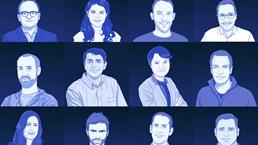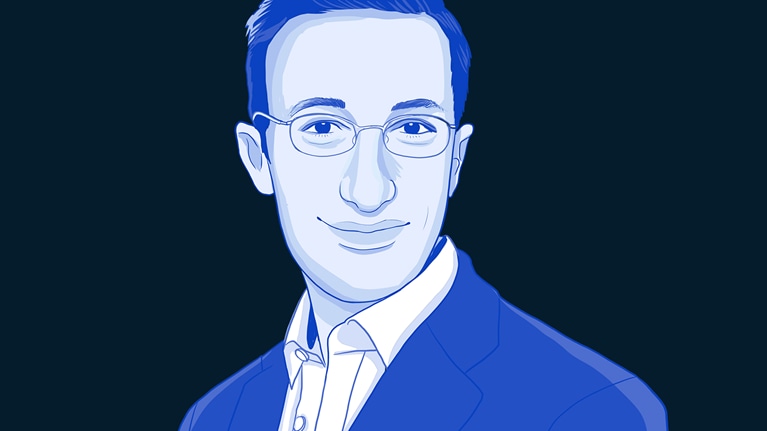Freedom to test new ideas, individual ownership over decision making, rapid product launches—these descriptors sound more like a start-up than a blue-chip company. Yet Delivery Hero has managed to retain many qualities of a start-up on its road to becoming a large organization with solid market capitalization. Niklas Östberg, Delivery Hero’s cofounder and CEO, discusses with McKinsey’s Philipp Hillenbrand how the organization continues to experiment and expand while maintaining its well-earned market position.
Philipp Hillenbrand: Delivery Hero has been around for ten years, and in that time, it has scaled from nothing to nearly €22 billion in gross merchandise value [GMV]. It also processes eight million daily orders and has more than 43,000 employees. Where do you find the resilience to continue to believe in bold, seemingly unachievable goals?
Niklas Östberg: I did cross-country skiing when I was younger, and I would go out in the dark Swedish forest in the gray, cold weather with just one purpose: to become the best skier in the world. At some point, my goals changed. But that experience taught me about resilience.
I’ve always believed in what Delivery Hero does, so when I heard critics say, “Will this company ever be profitable?” it gave me the energy and motivation to prove them wrong. Success feels better when no one believes in you.
The challenging part is when things are not going the way you want them to. Maybe your competitors are strong in a specific market, or you are burning more money than expected, or the product is not evolving. In those tough moments, you need to stay calm. Sometimes I’ll go for a run and take a break, but that’s not always enough.
I’ve learned to make a mental switch from focusing on what’s going wrong to instead asking, “What specifically can I do?” Back in the day, someone told me the saying: “How do you eat an elephant? Piece by piece.” When you have a monster problem ahead of you and don’t know where to start, make a list and solve the problem one task at a time. That approach can help build confidence.
Philipp Hillenbrand: What is your recipe for finding balance while facing a mix of stock market expectations, experiencing high growth, and navigating the COVID-19 crisis?
Niklas Östberg: Years ago, when things didn’t go well, I wouldn’t tell anyone. Then one day, I dared to be more open with my team and say, “Here’s the good and the bad, here are my weaknesses, and here’s our current status.” People responded by saying they would stand with me and fight with me, and I thought, “Wow, that’s such a big weight off my shoulders.” Being open kills stress and helps you better deal with problems because you’re sharing them with others instead of managing them by yourself.
I’m also still highly involved in hiring, but mainly as a culture check to ensure that people fit our speed. I look at their passion, their capability, and their drive. It’s also critical to have people who can be open and honest when things don’t go the way you want. Once you have a good team that you can trust and that will execute on projects even when you’re not there, you’ll have more resilience and more room to breathe.
Philipp Hillenbrand: What is different for you now as the leader of a large organization? And what has remained the same?
Niklas Östberg: In the early days, I did absolutely everything myself and had a hard time letting go. Even if I hired people, I still wanted to be involved in everything from setting up the marketing campaigns to deciding exactly how things should look on the app.
Then at a certain point, that level of involvement wasn’t so scalable. Dedicating 1 percent of my time to every topic is much less effective than spending 100 percent of my time on one thing. But it took a long time for me to get there. And the larger the organization became, figuring out the vision, values, strategy, structure, and how we operate took more and more of my time.
I also look at the numbers a lot. I still think I’m the one who knows the business the most because I spend so much time asking, “Why does this market work? Why is this market not working? Why are we not growing as fast in this area or region?” I probably drill into our reporting systems more than anyone. I don’t give the answers, but I pose questions to the team to help them focus and infuse energy into the effort.

Shaper interviews
Philipp Hillenbrand: How do you ensure that new efforts are given the right level of attention so they don’t get lost among the big business lines?
Niklas Östberg: Even though Delivery Hero is a company with very little bureaucracy, there is still some, which is why I will shield new ideas from the organization, so they don’t get killed. I just want to make sure that I trust the person I run the idea by and that the idea is protected. Then, if it does well, I might integrate it into the company, and if it doesn’t, I’ll kill it.
Let’s say we do something in fintech; the people I hire for that project will know much more about fintech than I do. I’m not there to say what should happen, but I will ask questions to keep them engaged. I’ll also share context and information and give them the resources and freedom to work undisturbed so they can do whatever they want within the respective effort’s scope.
Philipp Hillenbrand: It is easy to run at a high rate if you are a start-up, but many incumbents struggle with maintaining their speed and drive as they grow. How do you keep that fast metabolic pace within such a large organization, besides hiring the right people?
Niklas Östberg: Build an organization where you are not the only one making the decisions. Of course, I love to make decisions, and there are many topics I have opinions on. But if I take decision-making authority away from my team or the people involved in a project, they will no longer have a sense of ownership and accountability. Instead, they’ll focus on pleasing their boss; they’ll ask questions such as, “What do you think Niklas wants?” and “How would he want something to work?” and “How do we present an idea to him?” However, if people have ownership over an idea, even if the decision is wrong, they will fight hard to make it work.
Too many large organizations still have steering committees or decision-making groups, which drives a different mindset around ownership and accountability, slowing down decision making. The more places you can give people end-to-end ownership over their decisions and the outcomes of those decisions, the faster your organization will become.
I also like to launch things quickly, which requires defining the scope and problem so that you can get results fast. Let’s say someone wants to launch a product or business; we would say, “OK, we’ll get this off the ground in 100 days.” It seems impossible. But then I’ll start asking the team questions such as, “Who should the team members be?” and “What does this product need to do?” Maybe it becomes the easiest, simplest app out there, or maybe you need to use a different technology.
Asking those kinds of questions provides direction and gives people the drive to get things done. Then once the product is live in the market, it’s easy to rally the team and say, “Now that we have orders, how do we make the product better? What’s the biggest hurdle to getting more customers?” Taking this approach helps them focus on the next piece and the next.
And once you have customers, even if it’s just one customer, it becomes very clear based on their feedback what needs to happen. We can discuss forever what a product should look like, but ultimately, the customer makes the decision, which is why I don’t like to waste time preparing and building and budgeting for something that won’t be the final product. No product launch should take more than 100 days.
Philipp Hillenbrand: If we take market cap as a proxy for success, Delivery Hero was valued at around €2 billion when I started working with you in 2015; in June of this year, its market cap peaked at around €33 billion. Where do you see the company on its 20th birthday?
Niklas Östberg: I think the business should easily be ten times as big as it is today. Today we have GMV of nearly €22 billion, so we can probably make around €310 billion in sales volume in ten years. From that €310 billion, we should be able to do between 5 and 8 percent EBITDA1 on sales volume. That would be roughly a €22 billion profit unit on a yearly basis. What that is worth is up to analysts to say and for investors to buy the stock or not. But I think it has the potential to be much bigger.


